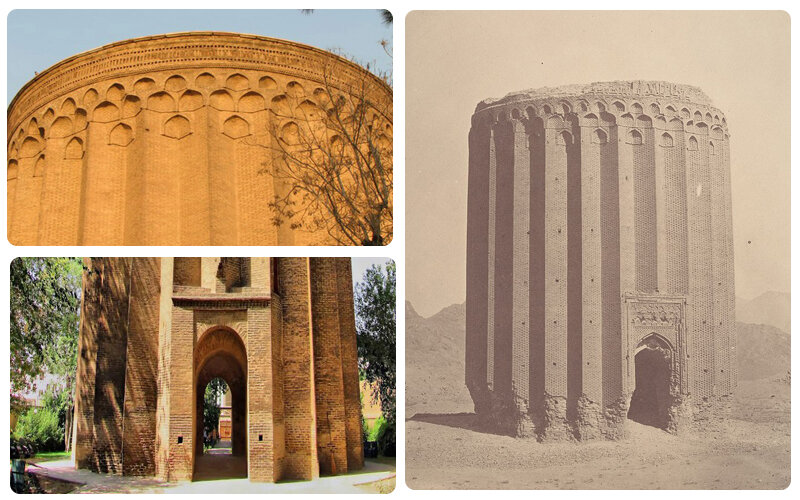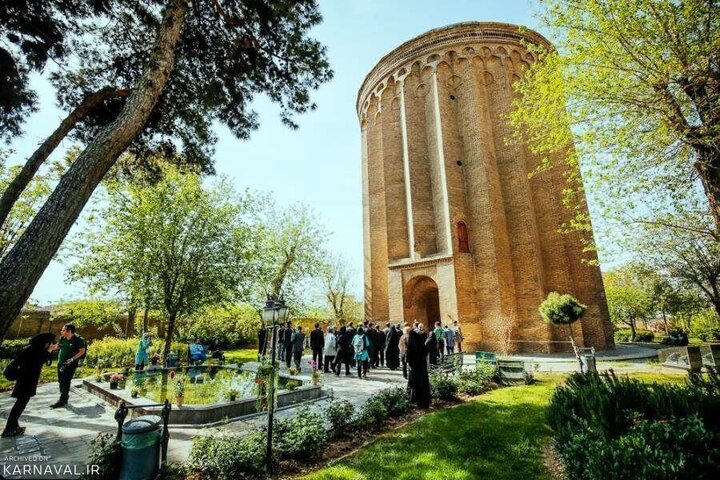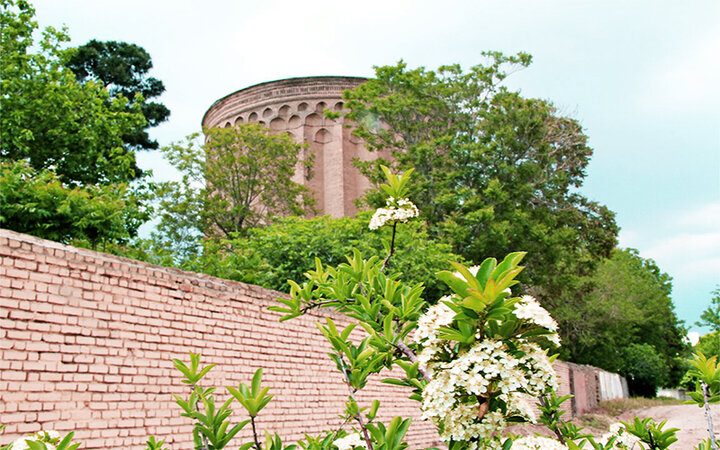Restoration of Tehran’s 12th-century brick tower enters final stage

TEHRAN - The restoration of Borj-e Toghrol, a 12th-century cylindrical tomb tower in southern Tehran, has entered its final stages, Mehr said.
Located in the Rey neighborhood, the brick tower rises up to 20m and was originally topped by a conical dome that has long since collapsed. The tower, surrounded by a small walled garden, also marks the tomb of the Seljuk king Toghril Beg.
On Thursday, Ali Darabi, the deputy minister for cultural heritage, along with other relevant officials, examined the restoration work, which commenced six months ago, the report said.
According to Rey's tourism chief, it is the third time that the monument has undergone restoration.
During the past nine centuries, due to numerous earthquakes, its dome has been destroyed, and the height of the tower has reached 20 meters, Tasnim reported.
The tower is said to serve as the mausoleum for the Seljuk king (born c. 990—died Sept. 4, 1063, Rey), who was the founder of the Seljuk dynasty, which ruled in Iran, Iraq, Syria, and Anatolia during the 11th–14th centuries.

The interior space is a cylindrical form and its exterior is made up of 24 vertical angles for a genius sundial function. It has two entrances on the north and south sides. Experts say the hollow structure of the tower has contributed a lot to the stability of the building.
Due to the severe earthquakes, a deep and tight foundation was able to prevent the collapse. The architect of the tower built several holes in the walls to allow air circulation and prevent moisture from seeping into the walls. The walls of the tower are also acoustic. The tower used to have a roof that amplified these echoes, but it is now ruined.
As for its sundial role, there are 24 vertical angles around the outside of the tower. At the top of each angle are four and a half shapes in a circle, representing a quarter of an hour. There are also six rectangles, each showing 10 minutes, and the narrower grooves showing the minutes. It is worth noting that the tower's two east and west downspouts read three and nine o'clock, and the tower's north and south doors also read six and twelve o'clock. Additional usage of the tower was to light a fire at the top of the tower, giving it the landmark function of showing the way to those coming to Rey from Khorasan on the Silk Road.

Rey was one of the capital cities of the Parthian empire (3rd century BC–3rd century CE) and it was captured by the Muslim Arabs in 641 CE. During the reign of the Muslim caliph Al-Mahdi in the 8th century, the city grew in importance until it was rivaled in western Asia only by Damascus and Baghdad.
According to Britannica, Islamic writers described it as a city of extraordinary beauty, built largely of fired brick and brilliantly ornamented with blue faience (glazed earthenware). It continued to be an important city and was briefly a capital under the rule of the Seljuks, but in the 12th century, it was weakened by the fierce quarrels of rival religious sects. In 1220, the city was almost destroyed by the Mongols, and its inhabitants were massacred. Most of the survivors of the massacre moved to nearby Tehran, and the deserted remnants of Rey soon fell into complete ruin.
AFM
Leave a Comment